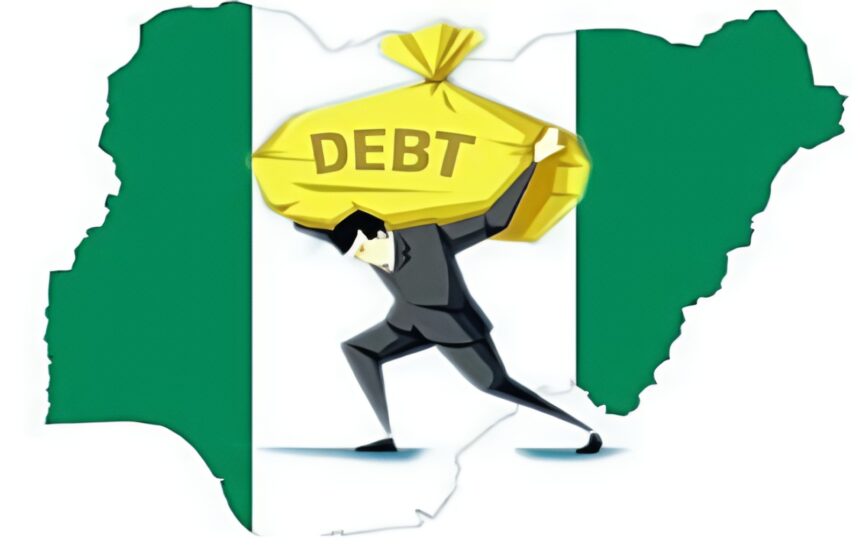A recent report by the Debt Management Office (DMO) has revealed that Nigeria’s public debt has skyrocketed to N149.39 trillion in the first quarter of 2025.
This represents a 22.8% year-on-year increase from N121.67 trillion in Q1 2024.
The DMO’s latest report, released on June 28, 2025, revealed a quarter-on-quarter rise of N4.72 trillion, or 3.3%, from N144.67 trillion in December 2024.
According to the report, the surge in Nigeria’s public debt is attributed to new loans and a depreciating naira that’s inflating the cost of external debt.
Nigeria’s external debt as of March 31, 2025, stood at N70.63 trillion ($45.98 billion), a significant jump from N56.02 trillion ($42.12 billion) in the same period in 2024.
This represents a year-on-year increase of N14.61 trillion or 26.1%. In quarter-on-quarter terms, external debt rose modestly from N70.29 trillion in December 2024 — a marginal increase of N344 billion or 0.5%.
The Central Bank of Nigeria (CBN)’s official exchange rate used for converting debt in Q1 2024 was N1,330.26 per US dollar.
External debt obligations include borrowings from multilateral institutions such as the World Bank and the African Development Bank, bilateral sources, and commercial creditors, including Eurobond investors.
The domestic component of Nigeria’s debt also maintained an upward trend, reaching N78.76 trillion ($51.26 billion) at the end of March 2025.This reflects a year-on-year increase of N13.11 trillion or 20% from N65.65 trillion ($49.35 billion) in March 2024.
Every quarter, domestic debt rose by N4.38 trillion or 5.9%, up from N74.38 trillion in December 2024.
The Federal Government alone accounted for N74.89 trillion of this total, while the 36 states and the Federal Capital Territory (FCT) jointly held N3.87 trillion.
Interestingly, state-level domestic debt declined slightly from N3.97 trillion in Q4 2024 and from N4.07 trillion in Q1 2024. This may suggest more prudent borrowing by subnational governments or better debt service performance in the period under review.
Domestic borrowing typically consists of government securities such as Treasury Bills, FGN Bonds, Sukuk, and Green Bonds.
These instruments are used to plug the country’s fiscal deficit and are generally seen as safer from exchange rate risk, although they come with their interest cost burdens.





